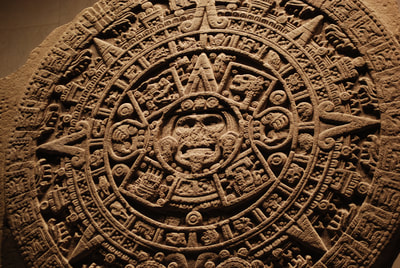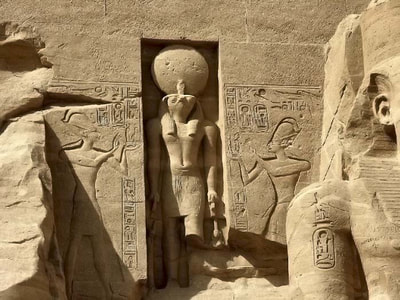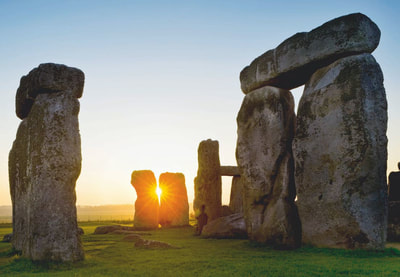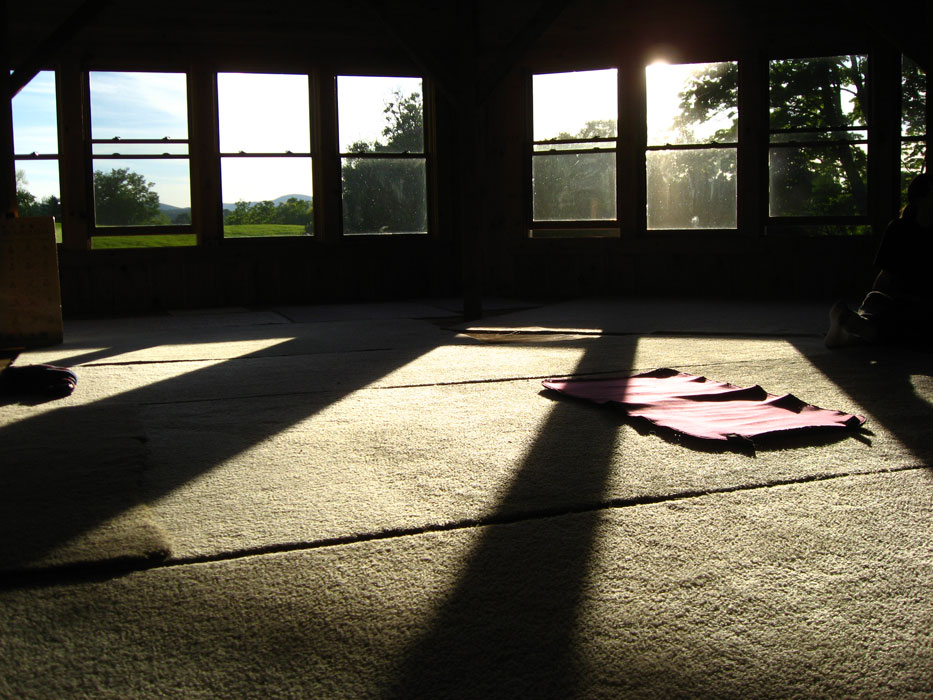SunDo: An Ancient Taoist Practice of Absorbing Sun Energy
|
Did you know that one of the ancient names of SunDo was “Way of Receiving Bark,” or “Way of Receiving Sun Energy” (BarkDolBup). Perhaps it isn’t a surprise that a discipline called ‘SunDo’ would have a history so closely tied to the powerful star that makes everything around us possible!
The earliest roots of SunDo date back to the end of the last ice in the late Paleolithic Period when a traveling people found themselves instinctively drawn toward the East, the direction the sun rises from each morning. |
Amidst very harsh conditions, the sun offered nurturing warmth and energy. These nomads created a practice to derive the most benefit from the sun, by humbly facing it early each morning and shifting postures to expose each part of their bodies to its life-giving energy. In the Neolithic Age (New Stone Age) that followed, SunDo was developed into a complete discipline in Ancient Korea and became an essential part of a person’s basic education.
Ancient Koreans thought of the “heavens” (the sky, sun, moon, and stars) as a sacred force present and alive in all living things. Their desire to get closer to the heavens drew many SunDo practitioners to the mountains and inspired the distinctive breath focus of the discipline.
|
Korean Taoists believed air was the connecting force between people and the heavens and that by honing one’s breathing, it was possible to unlock hidden potential and achieve greater oneness with the divine.
This association isn’t surprising — as we’ve noted from the many immediate benefits of deep, focused breathing, it can feel pretty divine! But these deep breathing benefits combined with the restorative power of sun energy made for a legendary practice. |
Sun reverence spans cultures and world history
The mythic power of the sun has always been a fixture of what makes life possible — it cultivates the food we eat, it creates the pleasant temperate climates we and all animals enjoy, it allows us to see the beauty of the world around us, it gave us the ability to tell time long before we ever had mechanical clocks, and it even energizes and restores our bodies through direct exposure to its light. It’s no wonder that nearly every ancient religion featured some kind of sun deity or worship.
In addition to the early spiritual practices of Korea, these world cultures were also widely recognized for their unique spiritual focus on the sun:
|
The Aztecs
Aztecs didn’t just have one sun god — they had enough to cause confusion! The position of god of the sun was viewed by the Aztec pantheon as the ultimate role and was attempted by 4 gods who desired such prestige. Ultimately, their reigns ended in disaster being sabotaged by other gods who also sought the honor. This dispute was finally settled by two gods who sacrificed their lives to become the sun and moon (Tonatiuh and Tecciztecatl, respectively). But in addition to these “5 Ages” of sun gods, Aztecs also had a sun deity associated with war (Huitzilopochtli) and a god of wind connected to the sun (Ehecatl) who sacrificed the other gods to make sure the all-important sun continued to move. Accordingly, Aztecs viewed the sun as important enough to sacrifice one’s life for. |
Ancient Egypt
Ancient Egyptians worshipped the sun god Ra, the central deity of their pantheon, and a being so powerful and regarded, he was thought to have created everything. The Pharaohs were often seen as earthly extensions of the mighty god. Egyptians explained the natural and essential cycle of the sun rising and setting as Ra sailing across the heavens each day on his boat, the “Barque of Millions of Years,” and dying at the end of his voyage, only to be reborn at the start of each new day. Ra was also seen as closely related to the Greek sun god Helios and the Roman sun god Apollo. |
The Druids
The high-status Celtic contemporaries of the Romans were also noted for their sun worship. The Druids served combined roles of priests, men of law, doctors, and intellectuals in Celtic culture. Unlike the Egyptians and Aztecs, the Druids believed in just one god they called Be’al, which translates to “the life of everything.” This all-encompassing, vitalizing deity was closely associated with the sun. The Druids also paid tribute to the sun in one of the most captivating monuments in world history — Stonehenge. On summer solstice, each year in late June, visitors can witness one of the most stunning natural sights in the world — the sun rising through the Northeast entrance of the monument above the jagged “Heel Stone.” |
So, is sunlight actually good for you? ... Absolutely!
We’ve grown so accustomed to hearing the dangers of overexposure to sunlight, that we’ve begun to question its critical role in our wellbeing. If we do not properly respect any powerful force of nature, we can certainly put ourselves in harm’s way, but this thinking overlooks the intuitive wisdom that East Asians and the many historic peoples above understood very clearly — responsible exposure to sunlight is vital to our health, and modern science confirms it.
The many benefits of sunlight exposure in moderation include:
- Increase in mood-improving serotonin levels
- Stronger bones from Vitamin D absorption
- Cancer prevention (when used in moderation)
- Relief from eczema, acne, psoriasis, and other skin conditions
- Relief from rheumatoid arthritis and many kinds of inflammation
Getting the most out of sunlight with SunDo
SunDo still incorporates elements of its early sun revence into its modern practice. On a symbolic level, teachers today pay tribute to the masters of the art and the sun’s important role in the practice by placing their photos (normally of Taoist hermit masters like Grandmaster Chung-San and Master Kim) on the Eastern walls of their practice spaces.
Modern SunDo studios and classes continue to bring the restorative benefits of sunlight into each student’s morning practice regimen. Students complete their warm-ups facing the rising sun to the East. Then, to begin their postures, students face the West as the sun rises higher in the sky. By turning their backs to the sun, practitioners are able to absorb sunlight as yang energy onto their back sides, which are the yin sides of the body. During SunDo retreats, many morning class offerings also begin in the early hours between 4 and 6 am as sunlight gently grows stronger. This allows practitioners to receive the sun’s rising energy as the body’s energy is also rising upon waking after sleep.
SunDo still incorporates elements of its early sun revence into its modern practice. On a symbolic level, teachers today pay tribute to the masters of the art and the sun’s important role in the practice by placing their photos (normally of Taoist hermit masters like Grandmaster Chung-San and Master Kim) on the Eastern walls of their practice spaces.
Modern SunDo studios and classes continue to bring the restorative benefits of sunlight into each student’s morning practice regimen. Students complete their warm-ups facing the rising sun to the East. Then, to begin their postures, students face the West as the sun rises higher in the sky. By turning their backs to the sun, practitioners are able to absorb sunlight as yang energy onto their back sides, which are the yin sides of the body. During SunDo retreats, many morning class offerings also begin in the early hours between 4 and 6 am as sunlight gently grows stronger. This allows practitioners to receive the sun’s rising energy as the body’s energy is also rising upon waking after sleep.






